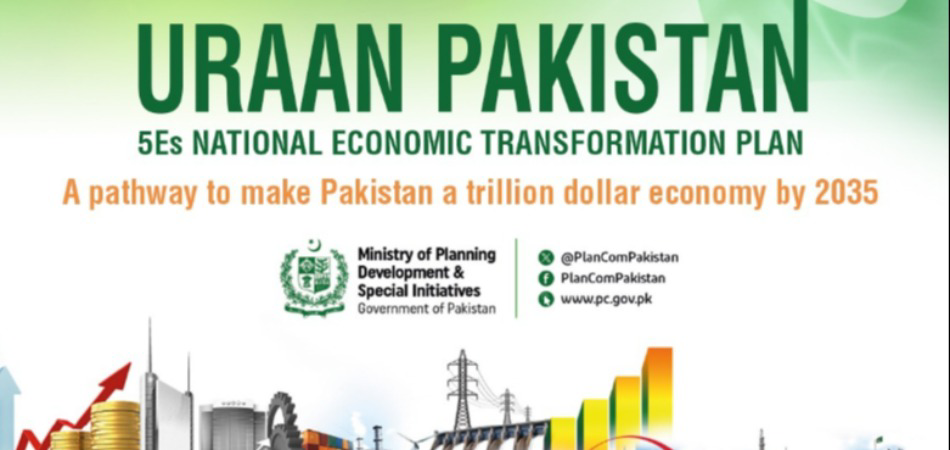Inflationary pressures to recede in 2HFY20 on continuous decline in domestic demand

By MG News | January 07, 2020 at 03:44 PM GMT+05:00
January 7, 2020 (MLN): The signs of sustainability in Pakistan’s economy were observed during the first quarter of FY20.
According to the First Quarterly Report on State bank of Pakistan’s Economy for FY20 released yesterday, the macroeconomic stabilization measures taken over the past year and a half had largely succeeded in reining in demand pressures in the economy by the start of FY20 with the initiation of IMF’s Extended Fund Facility program.
However, inflation proved difficult to deal with, especially given: (i) rising cost pressures emanating from the exchange rate depreciation and the rationalization of energy prices; (ii) a large fiscal deficit last year and its financing through central bank borrowing; and (iii) a steep rise in food inflation in the fourth quarter of FY19.
For FY20, the SBP’s projections at the start of the year (July 2019) clocked in at an elevated range of 11-12 percent. Not only was this range higher than previously projected, but it was also in excess of the medium-term target of 5-7 percent.
The headline CPI inflation recorded a broad-based increase of 11.5 percent during the quarter –the highest quarterly inflation since Q4-FY12. Importantly, the contribution of core inflation remained more or less unchanged at last year’s level, which indicated softening demand pressures in the economy amid the ongoing macroeconomic stabilization efforts. However, the increase in food and energy inflation pushed up the overall inflation.
As the quarter progressed, the upward pressures on inflation began to materialize. The steepest jump was recorded in the energy price index which alone contributed 1.6 percentage points to the overall inflation during the quarter. Revenue measures also contributed, as traders/manufacturers passed on the impact of higher federal excise duty (FED) on cigarettes and edible oil, and increased sales tax on sugar, to end-consumers. The MPC decided to keep the policy rate unchanged in its September meeting since these pressures were already taken into account in the July 2019 decision where MPC raised the policy rate by 100 basis points.
In case of monetary aggregates, the report noted that the broad money expanded by Rs 105.2 billion during Q1-FY20, compared to Rs 22.4 billion last year. The entire increase in M2 stemmed from a surge in net foreign assets (NFA) of the banking system, reflecting the improvement in the country’s balance of payments and the receipt of the first tranche of the IMF’s EFF program.
Here, it is pertinent to mention that this is the first time that the IMF’s lending for a balance of payments support will also be utilized by the government to finance its budget deficit, therefore, it will be treated as a liability of the government, not of the central bank.
Within the budgetary borrowings, a clear shift was observed, with the government borrowing heavily from commercial banks to retire its SBP debt. This was unlike last year when the government had borrowed heavily from the SBP to retire its commercial bank debt.
This shift was attributed to two factors. First, the government strictly adhered to its commitment of not resorting to deficit monetization. Second, the commercial banks’ own appetite for investing in government papers remained strong, as they expected interest rates to have plateaued. Moreover, they also remained averse to private sector lending.
With regards to private sector credit, a general slowdown in the manufacturing and commercial activities resulted in significantly lower credit appetite of businesses. This, coupled with higher interest rates, led firms in a number of sectors to deleverage, whereas fresh applications for working capital finance also decreased notably. In cumulative terms, private businesses retired Rs 85.4billion loans, compared to an offtake of Rs 99.0 billion during Q1-FY19.
Going forward, the report highlights that the inflationary pressures are expected to recede in the second half of FY20, in light of continued softness in domestic demand which is expected to keep core inflation in check, and stability in the exchange rate on the back of improving CAD and financial inflows. The SBP estimates average headline CPI inflation to stay within the range of 11 –12 percent. This forecast is subject to upside risks in the form of a reversal in global crude prices, exchange rate depreciation and increased budgetary borrowings.
Copyright Mettis Link News
Related News
| Name | Price/Vol | %Chg/NChg |
|---|---|---|
| KSE100 | 130,686.66 280.01M |
0.26% 342.63 |
| ALLSHR | 81,305.25 897.01M |
0.35% 281.26 |
| KSE30 | 39,945.45 114.02M |
0.09% 37.19 |
| KMI30 | 190,698.05 148.61M |
0.61% 1163.05 |
| KMIALLSHR | 55,074.15 495.43M |
0.53% 290.50 |
| BKTi | 34,568.40 28.73M |
-1.07% -372.33 |
| OGTi | 28,739.35 22.59M |
1.57% 443.29 |
| Symbol | Bid/Ask | High/Low |
|---|
| Name | Last | High/Low | Chg/%Chg |
|---|---|---|---|
| BITCOIN FUTURES | 110,215.00 | 110,525.00 110,155.00 |
-200.00 -0.18% |
| BRENT CRUDE | 68.86 | 68.89 68.84 |
0.06 0.09% |
| RICHARDS BAY COAL MONTHLY | 97.50 | 0.00 0.00 |
-0.75 -0.76% |
| ROTTERDAM COAL MONTHLY | 108.45 | 109.80 108.45 |
-0.55 -0.50% |
| USD RBD PALM OLEIN | 998.50 | 998.50 998.50 |
0.00 0.00% |
| CRUDE OIL - WTI | 67.13 | 67.18 67.00 |
0.13 0.19% |
| SUGAR #11 WORLD | 16.37 | 16.40 15.44 |
0.79 5.07% |
Chart of the Day
Latest News
Top 5 things to watch in this week
Pakistan Stock Movers
| Name | Last | Chg/%Chg |
|---|
| Name | Last | Chg/%Chg |
|---|

.jpg)


 Trade Balance
Trade Balance
 CPI
CPI